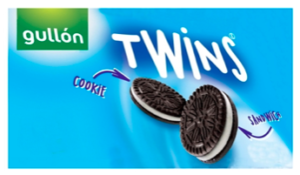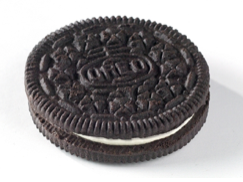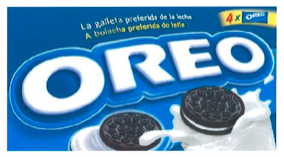On 28 May 2020 the General Court rendered its most recent ruling regarding enhanced protection of trade marks with a reputation (T-677/18; available in French and Spanish). Two issues are of particular interest in this judgment. First, how to prove reputation, as well as distinctiveness, of a mark consisting of the shape of the product which is always used (in this case also registered) in combination with a word sign (that furthermore is reputed itself). Second, when it is useful to rely on enhanced protection of reputed marks in cases of identical conflicting goods.
The applicant (Galletas Gullón, SA) filed the EUTM application for the figurative sign shown below in relation to biscuits in Class 30.

The opponent (Intercontinental Great Brands LLC) opposed the application based on: 1) prior 3D EUTM No. 8566176 (shape of the biscuit with the word OREO appearing in the middle), registered in Class 30; 2) Spanish figurative mark No. 2845539 registered in Class 30.


The opposition was based on Article 8(1)(b) EUTMR – likelihood of confusion, and 8(5) – protection of trade marks with a reputation. The EUIPO upheld the opposition on the basis of the 3D mark, on the ground of Article 8(5), and did not examine the claim based on Article 8(1)(b).
The applicant challenged the reputation of the 3D mark, as well as the distinctiveness of the shape of the biscuit which was crucial for the assessment of the similarity between the conflicting signs. In this respect, the Court recalled that a 3D mark may acquire distinctive character even if it is used in combination with a word sign, provided that it is perceived as designating the origin of the goods in question. Consequently, evidence showing the 3D mark (including its 2D representations) with a word sign, could prove reputation and distinctiveness of the 3D mark (and not only of the word OREO) (paras 79-84).
In such cases, surveys demonstrating the knowledge and perception by the public of the shape registered as a mark may be of particular importance. The proprietor of the 3D OREO mark submitted a study on the recognition of the mark within the public. The biscuit was not shown to the respondents such as registered, but devoid of the word OREO. According to the Court, the removal of that word made the results of the study on the knowledge of the 3D mark all the more reliable. By showing solely the shape of the biscuit and asking the public: ‘What’s the first thing that comes to your mind when you see this product?’, the opponent treated the 3D mark as a product. The Court stated that this was appropriate to verify whether, on seeing that image, the respondents would distinguish a commercial origin. This precisely allowed to demonstrate reputation of the shape itself as a trade mark (paras 91-94).
While assessing the unfair advantage taken of the repute, the Court took into account the reputation of the prior mark, identity between the goods and noted a weak degree of visual similarity between the signs. The Court concluded that the consumers were likely to transfer the characteristics associated with the 3D OREO mark to the goods under the mark applied for. Hence, although there was no likelihood of confusion because of the other distinctive verbal elements used by the mark applied for, there existed a risk of free-riding (paras 125-128).
The judgment is a good example of a decision showing that applying the regime of special protection of reputed marks within the speciality is not always pointless. Invoking the special protection is useful when the signs are not sufficiently similar, in particular when they contain additional elements excluding confusion, such as elements which make the marks conceptually dissimilar. In such cases, the infringement in the form of unfair advantage, based on the concept of transferring characteristics associated with the earlier mark in relation to the goods covered, is usually hardly questionable. In most cases, however, when the marks are similar, the goods are identical, and moreover the reputation of the earlier mark is exceptional, it is difficult to rule out the likelihood of confusion. One may think that if the earlier 3D mark did not contain the verbal element OREO, the mark applied for should have been rejected based on Article 8(1)(b) EUTMR.
_____________________________
To make sure you do not miss out on regular updates from the Kluwer Trademark Blog, please subscribe here.



Das Lesen Ihres Artikels hat sehr viel Spaß gemacht. Margery Nevil MacDonell